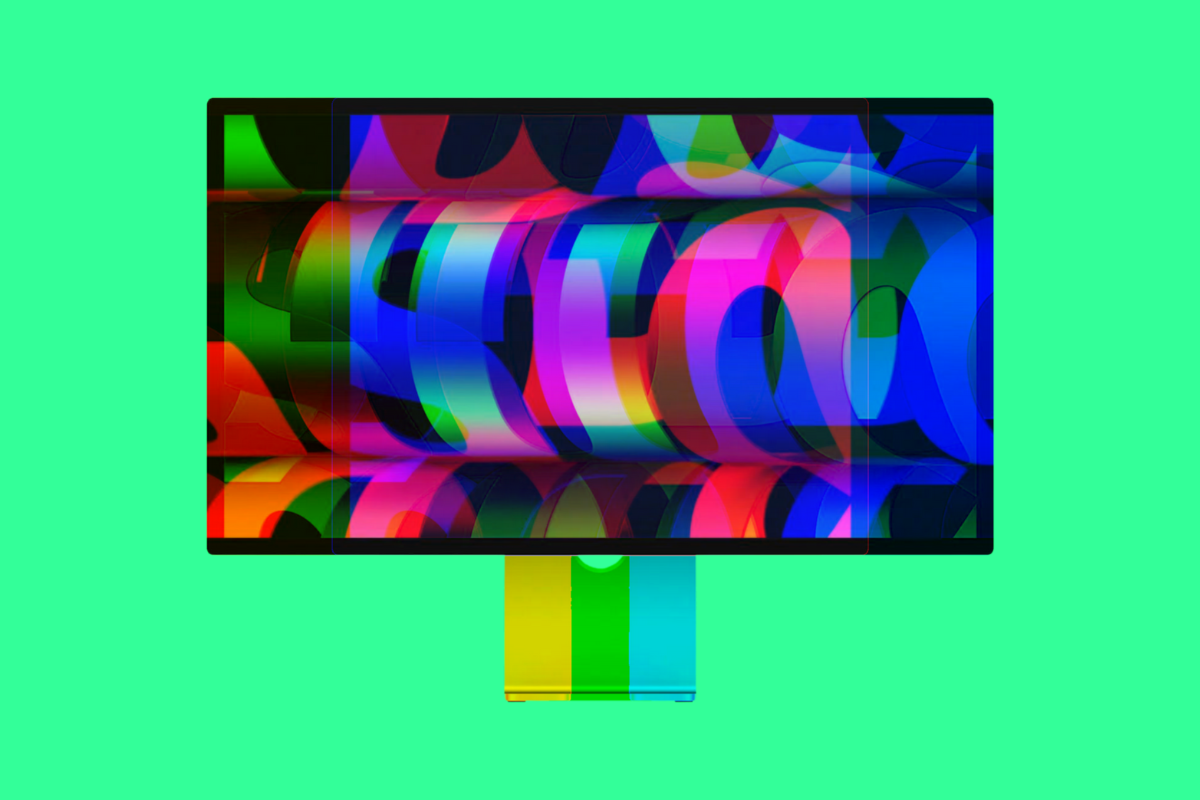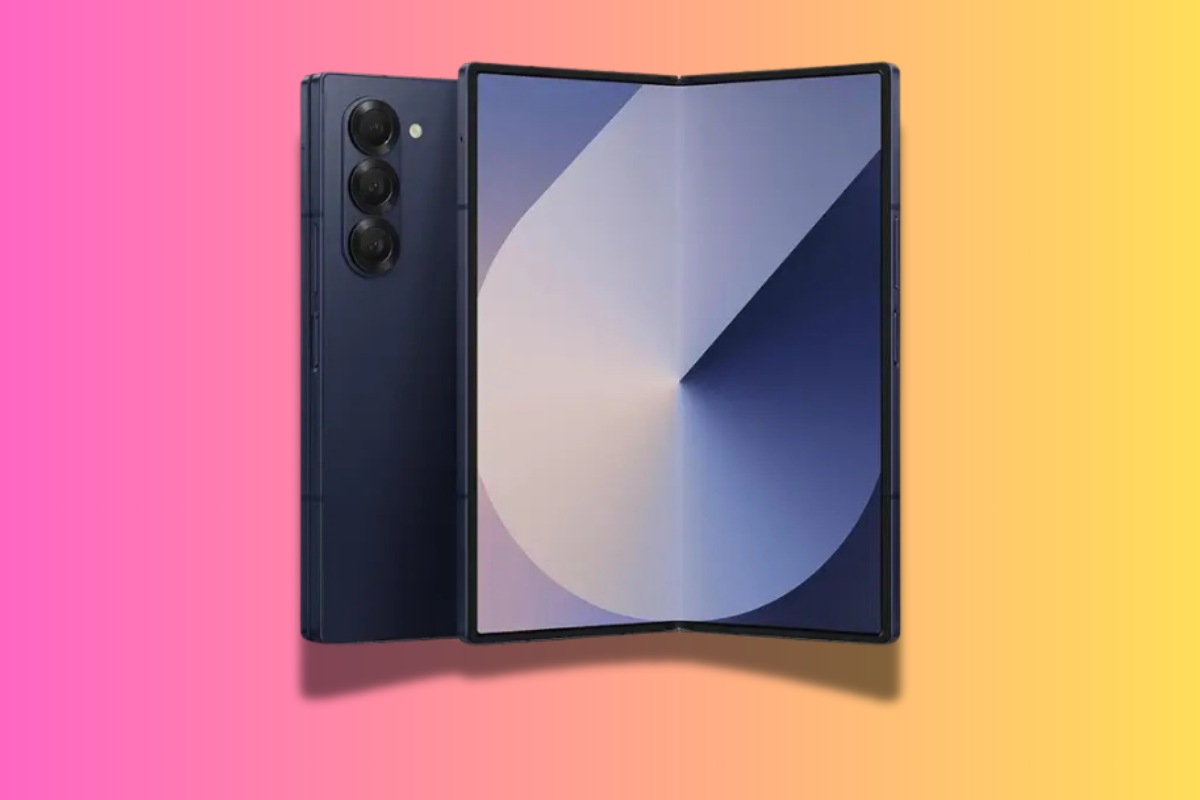Do I regret buying the Apple Studio Display? No. But I also didn’t enjoy how much it cost either…
Key Takeaways: Why I Bought The Apple Studio Display
- Apple Studio Display is a 5K monitor that is designed specifically for Apple’s Mac computers.
- It may be more expensive than the competition, but it offers superior build quality and reliability.
- Apple has earned its loyal fanbase over the years due to its commitment to quality control and customer service.
- Whilst cheaper alternatives may exist, Apple’s commitment to quality guarantees that you won’t be running into any major problems in the near future.
I had my last iMac for almost 10 years; it was a late-2014 iMac 5K. I paid around two thousand quid for it. And, for the most part, it ran like a dream.
A lot has happened during that decade too. Global pandemics, wars, kids, grey hair – too much to mention. But earlier this year, my trusty old iMac finally kicked the bucket. Although it had started to show its age back in late-2020/early-2021.
It didn’t die or anything; it just became so slow and sluggish that doing anything on it, let along CPU-intensive tasks, was a monumental pain in the arse. Normal things like running more than three Chrome tabs at once automatically summoned the beach ball of doom.
I shopped around, looked at the options, toyed with the idea of getting a MacBook Pro and an external monitor, then a Mac mini, and then, after much deliberation, I opted for a Mac Studio and Apple’s Studio Display – all in, this cost me the best part of four grand (with VAT).
Why the Mac Studio? The main reason is threefold:
- The I/O;
- The Performance;
- And, finally, I wanted a system that’d last me another 10 years.
In an ideal world, I’d have liked another all-in-one iMac but for whatever reason a proper iMac doesn’t seem to be happening anytime soon. The “new” iMac is more a family computer, similar to Apple’s colourful 1998 iMac. It has power, sure, but it never struck me as a professional’s work station.
There might be a Pro version iMac in the wings, but I couldn’t wait so I bit the bullet and went with Apple’s new desktop computer, the insanely potent Mac Studio with 1TB of storage, 64GB of RAM, and Apple’s M1 Max CPU. But this decision also meant I’d need to buy a monitor.
Choosing A Monitor For The Mac Studio…

And choosing a monitor for my shiny new Mac Studio wasn’t exactly easy either. I’m not a monitor expert by any stretch of the imagination but I knew I needed a 5K monitor to take advantage of my Mac Studio and its macOS software. And I knew it’d cost a pretty penny.
Prior to pulling the trigger on the Apple Studio Display, I did my research. I looked at ultrawide monitors, dual monitor setups, 4K monitors, and even Samsung’s latest M8 Smart Monitor. I spent weeks doing this.
And I always felt like I hit a brick wall whenever I got close to deciding. Whilst something seemed perfect, there was always one review that claimed something wasn’t quite right with the monitor, stuff like screen burn-in or wonky pixels, and this put me off, forcing me back to stage one all over again.
I gave serious consideration to the following monitors:
- LF UltraFine 34 5K
- LG UltraFine 27
- BenQ PD3220U 32 4K
- Dell UltraSharp U2720Q
- Samsing M8 Smart Monitor
But every time I felt like I’d found the right one, something would come up – a bad Amazon review, a complaint about its build quality, or the fact that it didn’t play nice with the Mac Studio.
And when I knew I’d be spending the best part of a thousand quid on it, this didn’t sit well with me.
To be frank, I didn’t even consider the Apple Studio Display at first. I didn’t know precisely how much it cost but I knew it was very expensive.
But as my options narrowed, I started to do some research on it and the results, while not completely positive, made it seem more and more inline with my exact requirements.
The only downside to the Apple Studio Display related to its price; it was just too expensive for some reviewers to recommend. Everything else was exactly what you’d expect though – great performance, solid build quality, outstanding internals, and a brilliant packaging.
The Perfect Monitor For The Mac Studio…
As I said, I’m not a monitor geek. I just needed something that A) had 5K resolution and was bright enough, B) worked seamlessly out the box, and C) would play nice with my Mac Studio.
The Apple Studio Display was designed to function seamlessly with Apple’s Macs, including the Mac Studio. It has a beautifully bright 27-inch 5K resolution display with 600 nits of brightness – more than enough for my needs.
I looked and looked and looked but during my “research phase” I could not find a single complaint about its build quality, save for the fact that Apple charges A LOT extra for a proper, moveable stand.
Apple Studio Display Specifications
- Retina 5K Display
- 27-inch (diagonal) LED-backlit display with IPS technology
- 5120×2880 resolution at 219 pixels per inch with support for millions of colours
- 500 cd/m2 brightness
- Wide colour (P3)
- True Tone technology
- Apple’s A13 Bionic chipset
- 6 Thunderbolt 3 (USB-C) ports for charging, connecting to a Mac and other peripherals, up to 40Gb/s data transfer speed.
- Built-in FaceTime HD camera with three microphones and stereo speakers
- Compatible with Apple’s Pro Stand monitor mount
With the stuff that mattered the most to me, things like its build quality, overall performance, and its I/O, the damn thing, while expensive, was more or less seamless.
In fact, the only real issues I could find aimed at the Apple Studio Display related to its price; most reviewers claimed it was too expensive and that there were cheaper alternatives with better overall features readily available.
Maybe so, but in my weeks-long deep dive on all the available alternatives to the Apple Studio Display, I could not find a single monitor that didn’t have at least one major issue with it, and for a product that I knew I’d be paying in and around £1000 for, this just wasn’t good enough.
What is Apple Studio Display Good For?
Here’s a quick overview of what the Apple Studio Display is good for – meaning, the types of users that should be looking at one to buy:
- The Apple Studio Display is ideal for Mac users who need the highest resolution display possible without paying for Apple’s more expensive Pro Display XDR monitor.
- It has a 5K Retina display and Apple’s A13 Bionic chipset, which provides excellent visuals and performance.
- Its wide colour (P3) range allows for true-to-life images to be displayed onscreen which is great for photo and video editing.
- Apple’s True Tone technology also adjusts the monitor’s colour temperature automatically, so that you can work comfortably for longer periods of time.
- Apple Studio Display is also perfect for tasks such as video editing, image retouching and other creative projects that require high-quality screens.
- With its 6 Thunderbolt 3 (USB-C) ports, Apple Studio Display is compatible with Apple’s Pro Stand display mount and can easily be connected to a Mac computer as well as other peripherals.
- It also has a built-in FaceTime HD camera and three microphones for video conferencing, as well as stereo speakers for audio output.
Is The Apple Studio Monitor Worth It?

In the end, I decided, based on my past experiences with Apple products, namely that they’re well built and have excellent longevity, to take the hit and go with the Apple Studio Monitor. Do I regret it? Absolutely not – it has been a fantastic monitor for my needs since the day I first unboxed it.
Could I have gotten similar performance from a slightly cheaper unit? Most likely. Whilst the Apple Studio Monitor is a brilliant piece of kit, it doesn’t really do anything particularly unique, save for the fact it is designed specifically for use with Apple’s Mac computers. And that it runs on Apple’s A13 Bionic chipset which brings things like Siri into the mix.
Indeed, most other monitors (in and around this price point) have similar specs and abilities, and the vast majority will also match the Apple Studio Monitor in the performance steaks as well. 4K and 5K monitors are pretty easy to find pretty much anywhere these days.
Should You Pay Extra For The Apple Studio Monitor?
But, as usual, the devil’s in the details. You can have the same resolution screen, the same amount of nits, the same everything basically, but if the build quality and/or integrity of the monitor is lacking then you’re going to run into problems. And this is what I was most worried about when looking at third-party monitors.
I knew I was going to be spending upwards of a grand on my next monitor. This is just a given when you’re talking about 5K resolution in 2022’s market. But I wasn’t prepared to pay that much and get a monitor that had issues – or, worse, reliability problems.
I did my due diligence, looked at a host of Apple Studio Display alternatives, but in the end, much to the dismay of my accountant, I opted for the Apple Studio Display for the simple reason that, based on over a decade and half of using Mac computers and Apple products in general, I trust Apple’s quality control more than any of its competitors.
But I will agree that this monitor is HELLA expensive…
But They Probably Should Have Called It “The Mac Studio Display”…
And when you’re paying this kind of money, quality control is a huge factor that is all too often overlooked by reviewers that focus too heavily on superfluous features and abilities. I’d rather pay 500 quid more and get a monitor that I know will run seamlessly for the next decade, than go with a cheaper model and run into issues in 2023 or 2024.
It is this fact, or approach to how it does things, that has earned Apple so many loyal fans over the past few decades. Its products are very expensive, of course, but there’s a trust between Apple and its users that is rarely felt with other brands: you know what you’re getting, you know it will work, and if there are issues, Apple will sort it for nothing.
If you’re anything like me and you run a Mac Studio, or are thinking about getting one, and you’re more or less a complete n00b when it comes to monitors, do yourself a favour, and just go with the Apple Studio Display.
Because, really, this is a Mac Studio Display; it is designed for Macs and, while it will work with Windows PCs, providing they have Thunderbolt 3 or Thunderbolt 4 ports, the monitor itself, like all Apple products, is designed for use with Apple’s Macs.
For Mac users that like to keep inside Apple’s walled garden, it is arguably the only real option on the market for those that want the “complete” modern desktop Mac experience.
It’ll cost you more, of course, a hell of a lot more, but it’ll create fewer headaches in the long run and it’ll run seamlessly with your Mac, running macOS in glorious 5K resolution. Is it perfect? No. But it is damn close for a monitor. And perfection, or things that get even remotely close to achieving it, never come cheap…
Apple Studio Display FAQs
Is Apple’s Studio Display Worth The Money?
Yes, Apple monitors are worth it because they offer superior performance, quality, and reliability compared to other brands in the market. If you run a Mac or MacBook and you want a 5K monitor, the Studio Display is as good as it gets at this price point with respect to build quality, resolution, and I/O.
Can I Use Apple Studio Display with PC?
The Studio Display will work with PCs but your PC will need either a Thunderbolt 3 or Thunderbolt 4 port to connect to Apple’s monitor. And once they’re connected, you might need to play around with the settings to get everything working correctly.
Why Apple Studio Display is so expensive?
The reason the Apple Studio Display is so expensive is threefold: 1) it runs a 5K resolution screen, 2) it has Apple’s A13 CPU inside it, and 3) it is built entirely from the highest possibly quality build materials. That’s why it costs more than most other monitors.


